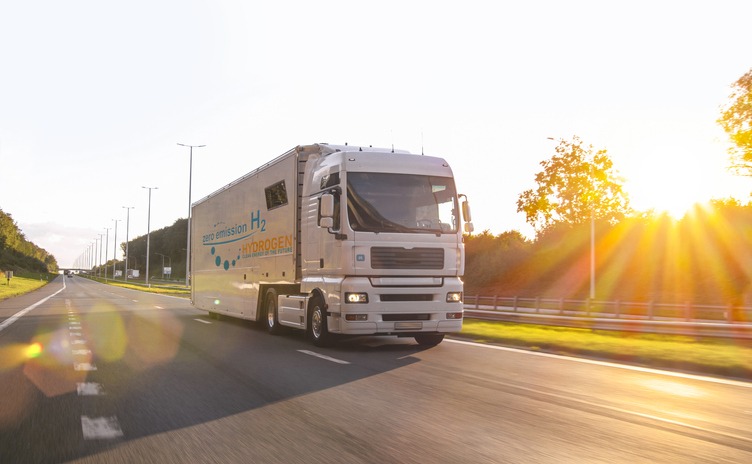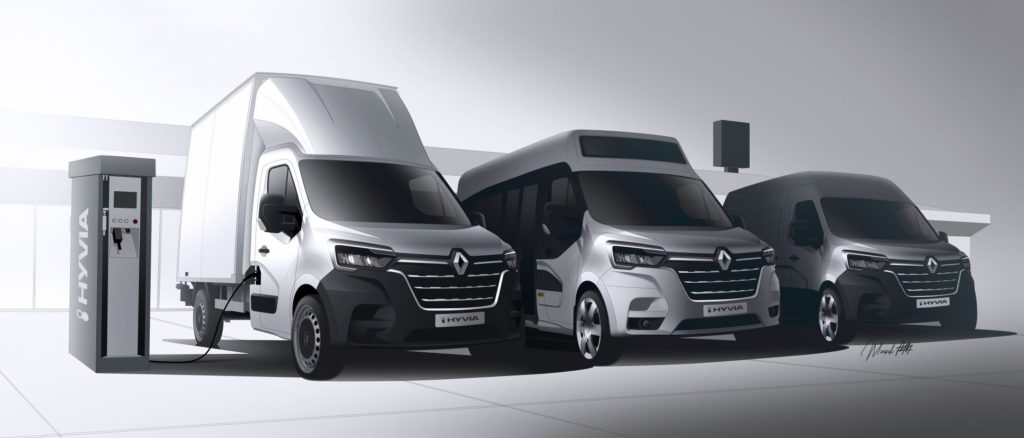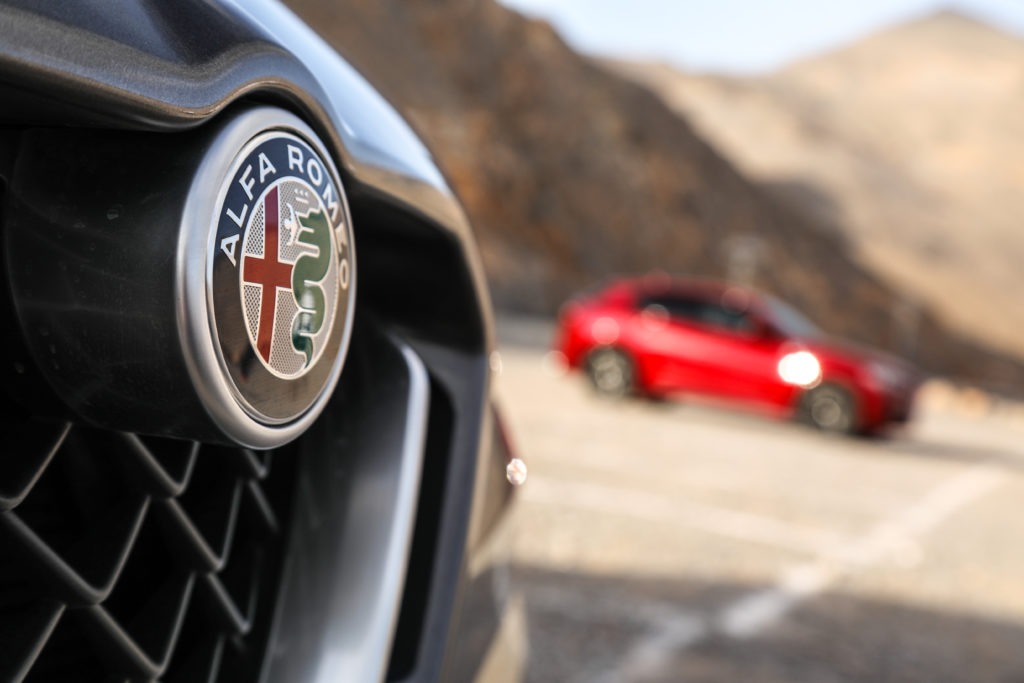Hydrogen a good fit to power commercial vehicles in logistics
24 August 2021

Hydrogen is increasingly being investigated by the automotive industry as an alternative fuel, and for the logistics side of the market, it is a great fit. This is because fuel cells are well suited to commercial vehicles, more so than battery-electric technology.
For one thing, the logistics market relies on timely deliveries. Drivers and businesses cannot afford to have their light-commercial vehicles (LCVs) and heavy-goods vehicles (HGVs) sat idle while batteries charge, with even a 30-minute top-up only giving 80% of the full range. In order to increase the distance a vehicle can travel, more battery cells would be needed. However, doing this will increase the weight, and this reduces the amount of cargo (payload) a vehicle can carry.
However, hydrogen fuel cells allow a vehicle to have the advantages of both internal-combustion engines (ICE) and electric technology. They are attractive because they can be refuelled in minutes and are less damaging to the environment as they emit zero carbon, just water vapour. The components can also be located around the vehicle, rather than under the floor, aiding weight distribution and not reducing the payload.
Both Renault and Stellantis have announced fuel-cell vans in recent weeks and aim to have hydrogen-powered vehicles on the roads by the end of this year.
Through its Hyvria subsidiary, Renault has unveiled details about the technology and the infrastructure they aim to create.
All-encompassing
Hyvia will develop green hydrogen, store the fuel, and distribute it through a network of refuelling stations. TIt plans to achieve this by the end of the year while bringing three vehicles to market at the same time.
‘To meet the challenges of hydrogen mobility, we need to offer fuel-cell vehicles and the entire ecosystem,’ said David Holderbach, president of Hyvia. ‘[The company] offers turnkey mobility solutions that leverage the production, storage, distribution of green hydrogen and a wide range of H2 LCVs. These solutions will meet the new needs of businesses, large accounts, fleets, and local communities and drive energy transition as a whole.’
The entire process will be based in France. Hyvia has headquarters in Villiers Saint-Frédéric, the home of Renault Group’s LCV engineering and development. Assembly of fuel cells and hydrogen-refuelling stations will begin later this year at Flins, while production of the vehicles will take place at Renault’s plant in Batilly.
Meanwhile, Stellantis is working with suppliers Faurecia and Symbio to create fuel-cell stacks and architecture for commercial vehicles. Its van will go into production later this year, although no details of branding or size have been announced.
‘As we look further into the future, hydrogen fuel cells show great promise, especially for LCVs, as the next level of zero-emission propulsion technology,’ said Harald J. Wester, head of engineering at Stellantis, earlier this year. ‘The technology will fulfil customer range expectations combined with towing and payload capacity.’
Split technologies
Some carmakers are focusing on hydrogen exclusively for the commercial-vehicle market as it is so well suited. Daimler is a case in point.
The company signed a joint venture with Volvo Trucks to develop fuel cells for the logistics market in 2020. The intention of the agreement is for Daimler to consolidate all its fuel-cell activities in the joint venture. This arrangement is the main reason for the cancellation of the GLC F-Cell project, which was targeting passenger vehicles.
′Truly CO2-neutral transport can be accomplished through electric drivetrains with energy coming either from batteries or by converting hydrogen into electricity,’ said Martin Daum, chairman of Daimler Truck. ′For trucks to cope with heavy loads and long distances, fuel cells are one important answer and a technology where Daimler has built up significant expertise through its Mercedes-Benz fuel-cell unit over the last two decades.’
′Combining the Volvo Group and Daimler’s experience in this area to accelerate the rate of development is good both for our customers and for society as a whole,’ adds Martin Lundstedt, Volvo Group president and CEO. ′By forming this joint venture, we are clearly showing that we believe in hydrogen fuel cells for commercial vehicles. But for this vision to become a reality, other companies and institutions also need to support and contribute to this development, not least to establish the fuel infrastructure needed.’
Government awareness
The UK government recently announced a hydrogen strategy focussing on transport usage in the industrial and logistics markets.
‘Hydrogen is likely to be fundamental to achieving the full decarbonisation of transport, with particular potential in areas of heavy transport ‘that batteries cannot reach’,’ it said.. ‘Hydrogen buses are already in use in some UK towns and cities, and feasibility studies are underway for the use of hydrogen and other zero-emission technologies in HGVs with the aim of undertaking future trials (subject to funding).’
The UK government announced a ‘hydrogen for transport’ programme in 2017, with £23 million (€27 million) invested in opening publicly-accessible refuelling stations. The latest analysis places transport as one of the biggest components of the hydrogen economy in future, with 2050 demand potentially reaching up to 140TWh.
The hydrogen strategy highlights that large long-haul HGVs are the most challenging segment of the road sector for developing zero-emission options due to their long journey distances and heavy payload requirements.
Therefore, the government is investing up to £20 million this financial year to design trials for electric road system and hydrogen fuel-cell HGVs, as well as running a battery-electric trial to establish the feasibility, deliverability, costs, and benefits of these technologies in the UK. To further support the shift away from fossil fuels, the government is also consulting on the phase-out date for the sale of new non-zero emission HGVs.
All of this adds to the fact that for the logistics market, hydrogen is the better alternative to diesel fuel. As its usage grows in this area, infrastructure will develop, and so too will the technology to produce green hydrogen. This, in turn, will help those with passenger-car options sell their vehicles based on refuelling stations and sustainability. Using the growing market in this way, the automotive two-fuel structure can continue into a zero-carbon future.



